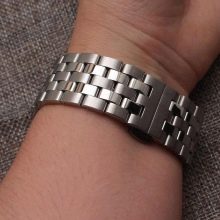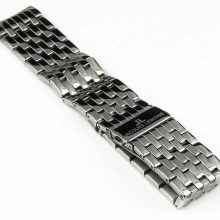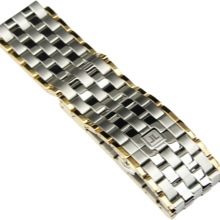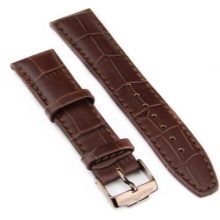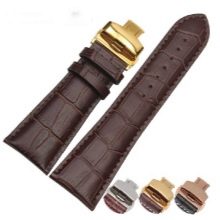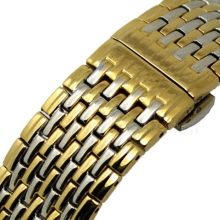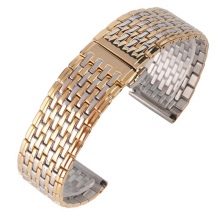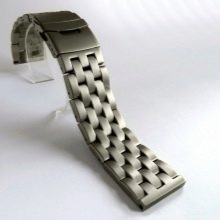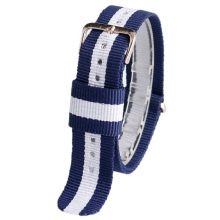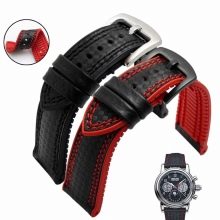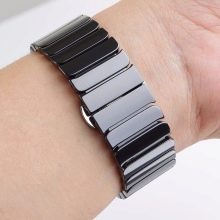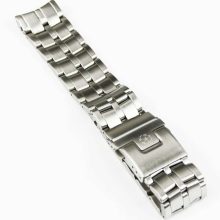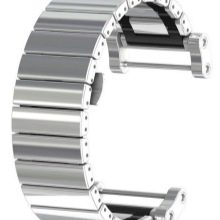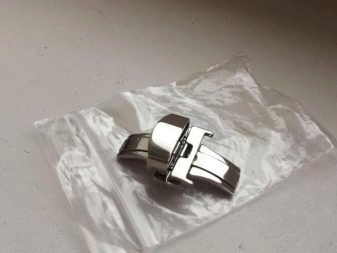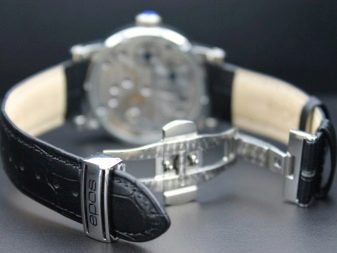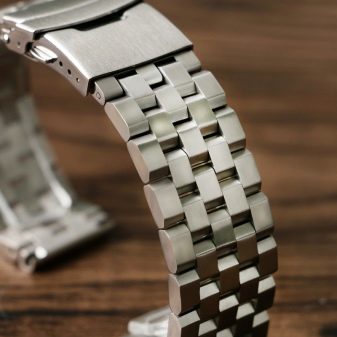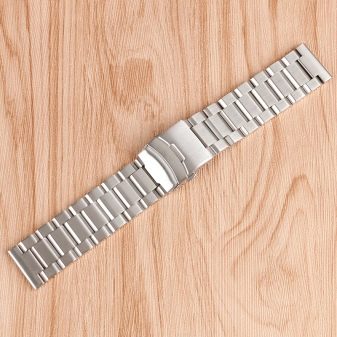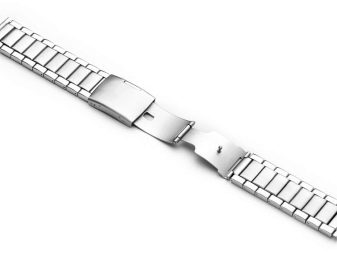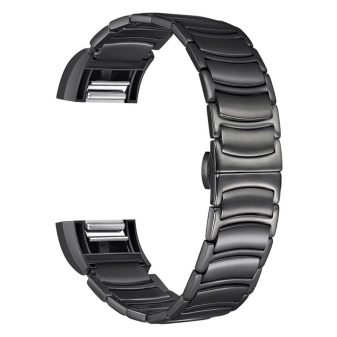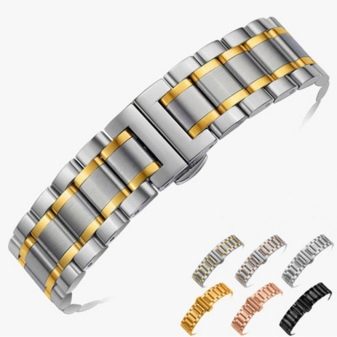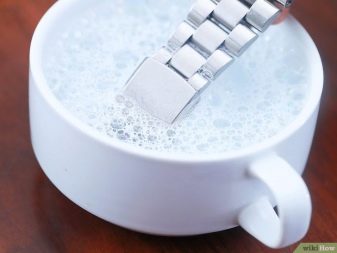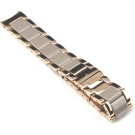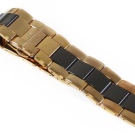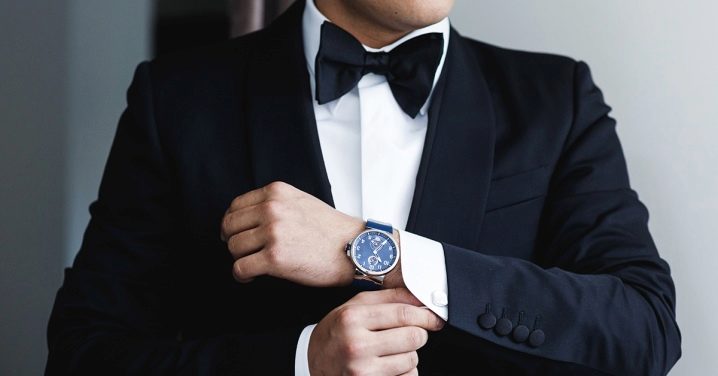Bracelets for men's watches: types and tips for choosing
Wristwatches have long become an integral attribute of our image. It's hard to imagine, but the bracelet sometimes plays a bigger role than the watch itself. Modern manufacturers offer a huge range of products for watches in various materials, colors and designs. Variety makes it difficult to match, and this article will make it easier for you to choose a bracelet for a men's watch.
Criterias of choice
The choice should start with determining the length and width. These two parameters affect how the watch will sit on a man's wrist. If you can place your index finger between the strap and your hand in the wrist area, then this is the length you need. In modern metal bracelets, the length is adjustable by means of detachable links.
However, it is worth choosing a length that matches the girth of the arm as closely as possible.
To determine the width of the bracelet, it is necessary to correctly measure the distance between the lugs of the watch case. When choosing a new leather belt, you should not measure the past. Over time, the leather wears out and loses its shape, which will lead to an incorrect selection of a new strap. Usually the width of the product is 20, 22 or 24 mm.
Material
The next step is to choose the material from which the bracelet will be made. The following types are most common.
- Steel. One of the most practical options. The steel has good wear and scratch resistance and, with proper care, retains a presentable appearance for a long time. In addition, a steel bracelet is cheaper than gold or silver. A significant disadvantage is a tangible weight, which is inconvenient for active exercises.
- Leather... The leather strap is the progenitor of all modern bracelets. Another wear-resistant material that has the ability to highlight your look very favorably. The bracelet made of high-quality leather is waterproof, does not wrinkle and does not absorb the smell of sweat. The disadvantages include the possibility of an allergic reaction and vulnerability to salt water.
- Gold or silver. When these materials are mentioned, luxury watches from brands such as Rolex come to mind. This is the best option to highlight your status. Unfortunately, these metals are susceptible to mechanical damage. To increase resistance, alloys of gold and silver / copper are created. In addition, gold is not suitable for allergy sufferers.
- Titanium. The lightest and most durable bracelet material. Perfect for both outdoor activities and everyday use. Resistant to corrosion and wear. The downside is the high price.
- Textile. Such belts are offered by the manufacturer as an alternative to the main ones. They are also equipped with sports and vintage models of famous brands. For example, Rolex or Omega. The fabric straps retain their shape well, are quite strong and durable.
- Carbon. Suitable for those who prefer modern and bold solutions. In terms of lightness, carbon is comparable to titanium, but inferior to it in resistance to mechanical damage. Due to this feature, the carbon bracelet can quickly lose its appearance.
- Ceramics... Strong material, has high wear resistance, but chips are possible. The ceramic bracelet is lighter in weight than steel or gold, and also retains its color for many years. Another advantage of ceramics is that it does not cause allergies. However, such a bracelet will be combined only with a watch made of similar material.
- Aluminum. Products made from this material are rare. The distinctive features are low weight and unusual color. The main disadvantage is the softness of the material, which leads to deformation.
Manufacturers offer several strap options for modern watch models. This greatly simplifies the selection process and does not limit the buyer in creating his own image.
Clasp
In order for the bracelet to sit correctly and securely on your hand, you need to choose a clasp. As with materials, there are several common standard designs. Let's consider them.
- Clasp. One of the easiest solutions. Most often used for steel bracelets. The clasp allows you to take off or put on the watch without wasting time. At the same time, the design of the clasp does not open completely, which protects the watch from slipping off the hand. Of the possible disadvantages, it is worth noting the wear of the retainer over time.
- Butterfly clasp. The design of such a fastener includes a two-fold mechanism and a snap-on latch. When unfolded, it resembles the wings of a butterfly, when folded, it is almost completely hidden under the strap. To open, you need to press on the protruding parts of the fastener.
- Clasp with protective mechanism. A variation of the butterfly design. For added protection, a hinged flap lock has been added. It should be borne in mind that due to the size, such a clasp will not work for those with thin wrists.
- Clip... The design is similar to the butterfly clasp, but the clip is thinner and not as wide. Pressing the clip until it clicks into place, you will fasten it. Its compact size allows the clip to be used in women's bracelets or thin straps. Of the advantages, it is worth noting the possibility of adjusting the length, and the non-breakable contour will prevent slipping from the hand. Unfortunately, a product with a clip will not be able to repeat the shape of a thin hand.
- Buckle. A fairly common type of clasp. Simple and reliable die-cast construction. Suitable for any type of wrist and can be used as a decoration. Cannot be used with metal or ceramic bracelets.
- No clasp. There are two types of belts without fastening: with a rigid frame or elastic. Elastic bracelets or bracelets-elastic bands due to spring elements provide excellent repetition of the shape of the hand. Bracelets with a rigid frame are deprived of this possibility.
Care rules
As with any item, the bracelet needs care to maintain its appearance. To clean the fabric straps, simply wipe them with warm soapy water and dry. But for metal and leather bracelets, it is necessary to take into account some features of the materials.
Caring for a leather product
The skin requires delicate handling. From interaction with sweat and moisture, a genuine leather bracelet coarsens and begins to crack. In addition, you should protect the bracelet from prolonged exposure to sunlight or heat sources. To avoid this, you need to clean the strap at least once a week with a special pasty solution.
In case of heavy contamination, vinegar or turpentine with beeswax will help.
Caring for a metal product
At first glance, a metal bracelet does not require attention. But contact with dust and salt from sweat can lead to corrosion... In this case, in addition to losing the appearance of the thing, you may be at risk of allergies. To avoid this scenario, it is necessary to wipe the bracelet every month with a toothbrush and warm soapy water. It is also necessary to store the watch in a place with good ventilation.
Owners of gold or gilded items should adhere to the same rules. Caring for any bracelet is simple and requires little effort. But the result of such actions will be a beautiful view of your favorite thing.
Bracelet manufacturers
If you buy a watch from a well-known manufacturer, then most likely it will come with a branded bracelet. But even such eminent watch brands as Orient, Rolex or Casio practice buying third-party straps. There are several major brands in the modern market for strap suppliers:
- Hirsch;
- Camille Fournet;
- ZRC;
- Santoni;
- Di-Modell.
All these companies have a common approach to the process of creating a bracelet / strap. The first hallmark of a serious brand is strict control over raw materials. Sources must be legal and comply with a number of regulatory documents. The second feature is control over the manufacture and screening of products with the slightest deviations from the norm.
We hope that the article has helped you decide on the choice of a bracelet or strap for your watch.


